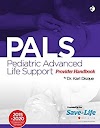Atlas of Retinal Oct E-Book: Optical Coherence Tomography 2017
| Featuresmore than 1,000 superb illustrationsdepicting the full spectrum of retinal diseases using OCT scans, supported by clinical photos and ancillary imaging technologies. Presents images as large as possible on the page with an abundance of arrows, pointers, and labels to guide you in pattern recognition and eliminate any uncertainty. Includesthe latest high-resolution spectral domain OCT technologyandnew insights into OCT angiography technologyto ensure you have the most up-to-date and highest quality examples available. Provides key feature points for each disorder giving you the need-to-know OCT essentials for quick comprehension and rapid reference. An excellent diagnostic companion toHandbook of Retinal OCT: Optical Coherence Tomography, by the same expert author team of Drs. Jay S. Duker, Nadia K. Waheed, and Darin R. Goldman. | |||
Table of contents : Content: Front Cover Inside Front Cover Atlas of Retinal OCT Copyright Page Table Of Contents Preface Contributors Acknowledgments Dedications 1 Normal Optical Coherence Tomography 1 Normal Optic Nerve 1.1 Normal Optic Nerve Volume Scans Retinal Nerve Fiber Layer Thickness (RNFL) Ganglion Cell Complex Optic Nerve Morphology Line Scans References 2 Normal Retina 2.1 Time-Domain OCT References 2.2 Spectral Domain OCT Summary Reference 2.3 Swept-Source OCT Summary 3 Normal Choroid 3.1 Normal Choroid Summary References 4 Normal Vitreous 4.1 Normal Vitreous Summary Key OCT FeaturesReference 5 OCT: Artifacts and Errors 5.1 OCT Mirror Artifact Vignetting Misalignment Software Breakdown Blink Artifact Motion Artifact Out of Range Error Reference 5.2 OCT Angiography Artifacts Blockage Artifacts (Fig. 1) White Line Artifacts (Fig. 2) False Positive Flow Quilting Defects (Fig. 3) False Negative Flow Projection Artifacts (Fig. 4) Vessel Duplication (Fig. 5) Segmentation Errors (Fig. 6) Shadowing Artifacts (Fig. 7) References 2 Isolated Macular Disorders 6 Age-Related Macular Degeneration 6.1.1 Drusen Summary Key Points References 6.1.2 Geographic AtrophySummary Key Points References 6.1.3 Isolated Pigment Epithelial Detachment Summary Key Points Bibliography 6.2.1 Type 1 Choroidal Neovascular Membrane Summary Key Points References Bibliography 6.2.2 Type 2 Choroidal Neovascular Membrane Summary Key Points References 6.2.3 Type 3 Choroidal Neovascular Membrane Summary Key Points Bibliography 6.2.4 Subretinal Hemorrhage Summary Key Points Bibliography 6.2.5 Disciform Scar Summary Key Points Bibliography 6.2.6 Retinal Pigment Epithelial Tear Summary Key Points Bibliography 6.2.7 Polypoidal Choroidal VasculopathySummary Key Points Bibliography 7 Vitreomacular Interface Disorders 7.1 Vitreomacular Adhesion Summary Key OCT Features 7.2 Vitreomacular Traction Summary Key OCT Features 7.3 Full-Thickness Macular Hole Summary Key Points Reference 7.4 Lamellar Macular Hole Summary Key OCT Features Reference 7.5 Epiretinal Membrane Summary Key OCT Features Reference 8 Central Serous Chorioretinopathy 8.1 Central Serous Chorioretinopathy Summary OCT Key Features References 9 Myopic Degenerative Maculopathies 9.1 Myopic Choroidal Neovascular MembraneSummary Key OCT Features Reference 9.2 Myopic Macular Schisis Summary Key OCT Features Reference Bibliography 9.3 Dome-Shaped Macula Summary Key OCT Features References Bibliography 9.4 Posterior Staphyloma Summary Key OCT Features References Bibliography 10 Hydroxychloroquine Toxicity 10.1 Hydroxychloroquine Toxicity Summary Key OCT Features References 11 Vitelliform Macular Dystrophy 11.1 Vitelliform Dystrophy Summary Key Features References 12 Macular Telangiectasia 12.1 Macular Telangiectasia Summary Key Points |














